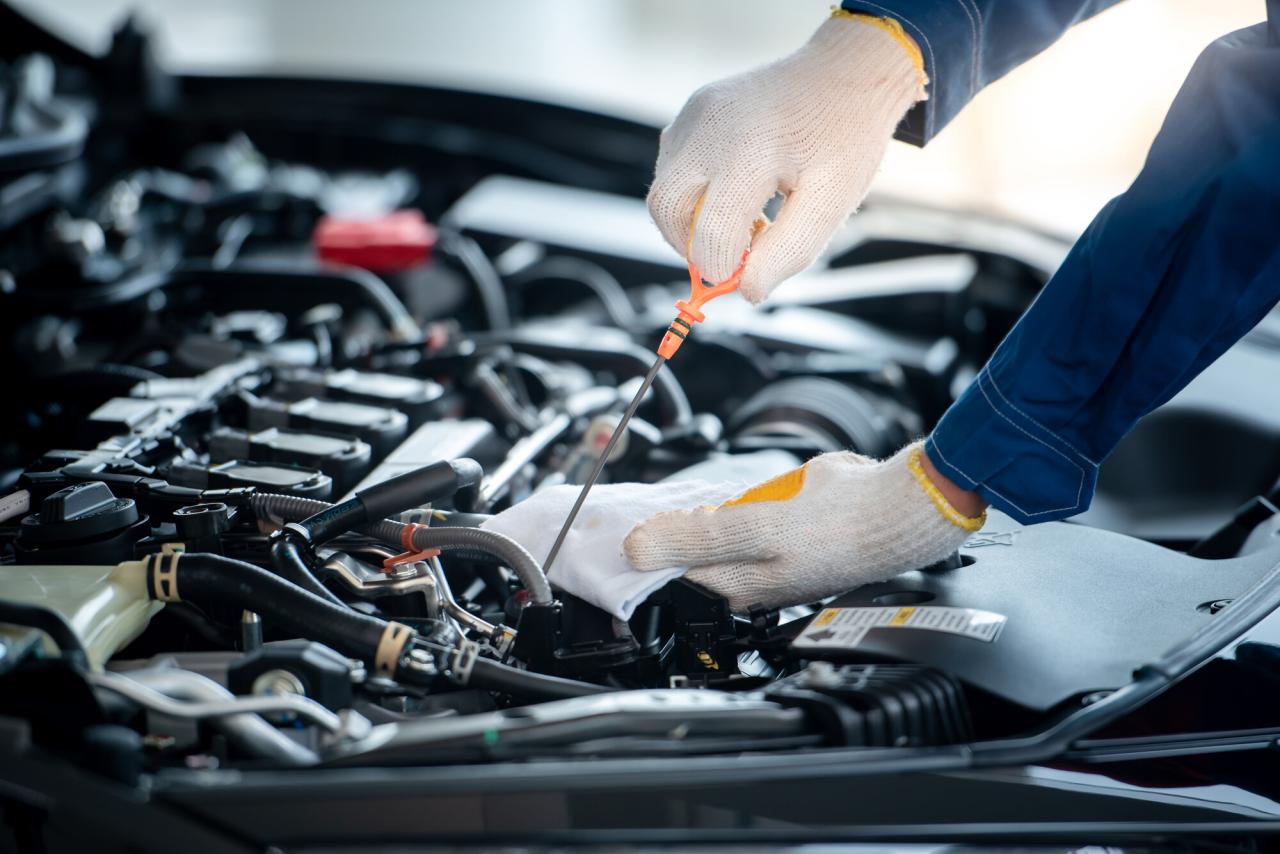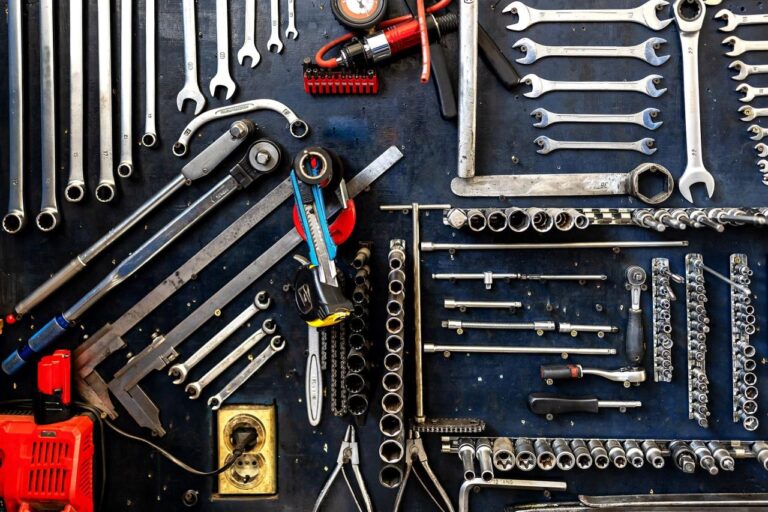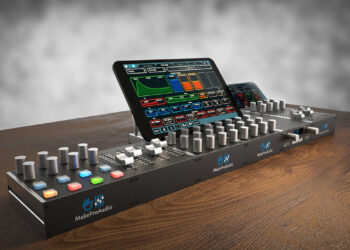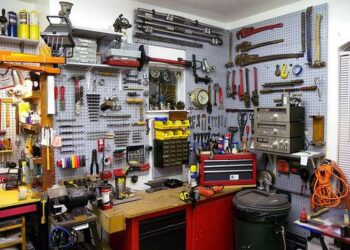The world of automotive repair has undergone a dramatic transformation. What was once a realm dominated by brute force and a keen mechanical eye is now increasingly reliant on advanced technology. Modern vehicles, packed with intricate electronic systems, demand a sophisticated approach to diagnosis and repair. For both professional mechanics and dedicated DIY enthusiasts, understanding and utilizing the latest automotive repair devices is no longer optional; it’s essential for accurate, efficient, and effective vehicle maintenance. This comprehensive article delves into the indispensable tools and diagnostic equipment that are revolutionizing how we care for our cars, from the simplest oil change to complex engine diagnostics. Get ready to explore the must-have devices that empower you to keep today’s complex vehicles running smoothly and reliably.
Diagnostic Tools

Modern cars are essentially computers on wheels. Their complex electronic control units (ECUs) constantly monitor hundreds of sensors, making specialized diagnostic tools indispensable for identifying and rectifying issues.
A. OBD-II Scanners
The On-Board Diagnostics II (OBD-II) system, mandated on all vehicles sold in the U.S. since 1996 (and similar systems internationally), provides a standardized interface for accessing vehicle data. An OBD-II scanner is the primary tool for communicating with this system.
- Reading and Clearing Codes: The fundamental function of an OBD-II scanner is to read Diagnostic Trouble Codes (DTCs), which are specific codes that indicate a malfunction in a vehicle system (e.g., “P0301” for a cylinder 1 misfire). Once a repair is made, the scanner can also clear these codes and turn off the “Check Engine” light.
- Live Data Streaming: More advanced OBD-II scanners offer live data streaming, allowing you to monitor real-time sensor readings such as engine RPM, coolant temperature, oxygen sensor voltage, fuel pressure, and more. This is crucial for diagnosing intermittent issues or verifying the proper operation of components after repair.
- Freeze Frame Data: When a DTC is set, the vehicle’s computer records a “snapshot” of sensor readings at that exact moment. This freeze frame data provides valuable context for understanding the conditions under which the fault occurred.
- Readiness Monitors: OBD-II scanners can also check the status of readiness monitors, which are self-tests performed by the vehicle’s computer to ensure emission-related components are functioning correctly. This is vital for passing emissions inspections.
- Enhanced Diagnostics (Manufacturer Specific): While basic OBD-II provides generic codes, many professional-grade scanners offer enhanced diagnostics that can access manufacturer-specific codes and parameters for deeper insights into particular vehicle makes and models. These often require proprietary software or licensing.
B. Scan Tools
While OBD-II scanners are great for basic diagnostics, professional scan tools offer a far more comprehensive suite of diagnostic capabilities.
- Bi-directional Control: Unlike simple scanners that only “read,” professional scan tools offer bi-directional control. This means they can send commands to the vehicle’s ECUs to activate components (e.g., turn on a cooling fan, cycle an ABS pump, retract an electronic parking brake), perform system tests, or recalibrate sensors. This is invaluable for pinpointing specific failures.
- Module Programming and Coding: Advanced scan tools allow for module programming and coding, enabling technicians to update software in various control modules, program new keys, or configure options after replacing components like an ECU or transmission control module.
- Guided Diagnostics and Wiring Diagrams: Many high-end scan tools integrate guided diagnostics, providing step-by-step troubleshooting procedures, access to wiring diagrams, component locations, and technical service bulletins (TSBs) to assist technicians in complex repairs.
- Network Topology Display: Modern vehicles use complex communication networks (CAN bus, LIN bus, FlexRay). Some advanced scan tools can display the network topology, showing which modules are communicating and helping diagnose network communication faults.
C. Oscilloscopes
An oscilloscope is a specialized diagnostic tool that displays electrical signals as waveforms, providing a visual representation of voltage over time. This is critical for diagnosing complex electrical issues that a simple multi-meter cannot.
- Signal Integrity: Oscilloscopes allow you to analyze the shape, amplitude, and timing of various electrical signals, such as sensor outputs (e.g., crankshaft position sensor, oxygen sensor), injector pulse widths, or communication bus signals. This helps verify signal integrity and identify intermittent glitches or noise.
- Diagnosing Intermittent Faults: Intermittent electrical issues can be notoriously difficult to track down. An oscilloscope can capture these fleeting events, allowing you to see problems that occur for only milliseconds.
- Ignition and Fuel System Diagnostics: They are invaluable for diagnosing ignition system issues (e.g., misfires, weak spark) by analyzing ignition patterns, or for evaluating fuel injector operation.
Essential Repair and Maintenance Tools
Beyond diagnostics, a solid set of hands-on tools is fundamental for performing actual repairs and routine maintenance.
A. Basic Hand Tools
No repair is possible without a comprehensive set of fundamental hand tools.
- Socket Sets (Metric & SAE): A complete socket set (both metric and SAE/imperial) with various drive sizes (1/4″, 3/8″, 1/2″) and extensions is absolutely crucial for loosening and tightening nuts and bolts.
- Wrench Sets (Metric & SAE): Open-end, box-end, and combination wrench sets in both metric and SAE sizes are necessary for fasteners that sockets can’t reach or grip. Ratcheting wrenches can significantly speed up work in tight spaces.
- Screwdriver Sets: A comprehensive set of Phillips, flathead, Torx, and often tamper-proof Torx screwdrivers are needed for various fasteners found throughout a vehicle.
- Pliers (Assorted): Various types of pliers, including slip-joint, needle-nose, locking (Vise-Grips), and cutting pliers, are essential for gripping, bending, cutting, and manipulating components.
- Hammers (Assorted): A general-purpose claw hammer, a rubber mallet (for gentle persuasion), and a dead blow hammer (for driving without bounce or damage) are all useful.
B. Fluid Management Tools
Proper fluid maintenance is critical for vehicle longevity.
- Oil Filter Wrenches: Specific oil filter wrenches (cup-style, strap-style, or claw-style) are needed to remove various types of oil filters.
- Drain Pans and Funnels: For cleanly collecting drained fluids (oil, coolant, transmission fluid) and for refilling fluids without spills.
- Fluid Extractors/Fillers: For transmission fluid, differential fluid, or brake fluid, a fluid extractor/filler pump makes the job much cleaner and easier, especially in cramped spaces.
- Brake Bleeding Kit: For brake fluid flushes or after replacing brake components, a brake bleeding kit (manual pump, vacuum pump, or pressure bleeder) is necessary to remove air from the brake lines.
C. Specialty Tools
Many automotive tasks require specific tools designed for that job.
- Compression Tester: To check engine health by measuring the pressure inside each cylinder. Low compression can indicate worn piston rings or valve issues.
- Fuel Pressure Gauge: For diagnosing fuel system issues by measuring the fuel pressure delivered to the engine.
- Vacuum Gauge: Useful for diagnosing vacuum leaks, engine timing issues, or restricted exhaust.
- Test Light/Multi-meter: Essential for basic electrical troubleshooting, checking for power, ground, and continuity. A digital multi-meter (DMM) can measure voltage, current, and resistance more precisely.
- Battery Tester/Charger: For checking battery health (cold cranking amps) and for charging depleted batteries. A smart charger can maintain battery health over long periods.
Safety and Support Equipment

Working on vehicles can be dangerous. Proper safety and support equipment are non-negotiable for protecting yourself and preventing damage to the vehicle.
A. Lifting and Supporting Tools
- Floor Jack: A sturdy floor jack (hydraulic or bottle jack) is essential for lifting a vehicle off the ground. Look for one with adequate lifting capacity for your vehicle.
- Jack Stands: Once a vehicle is lifted, always use jack stands to support it. Never work under a vehicle supported only by a jack. Use at least two, preferably four, rated for your vehicle’s weight.
- Wheel Chocks: Place wheel chocks on the wheels that remain on the ground to prevent the vehicle from rolling while lifted.
- Ramps: For quick access under the front or rear of a vehicle without jacking, sturdy ramps can be a convenient alternative.
- Engine Hoist/Cherry Picker: For major engine removal or installation, an engine hoist is indispensable.
B. Personal Protective Equipment (PPE)
- Safety Glasses/Goggles: Always wear safety glasses or goggles to protect your eyes from debris, fluids, or chemicals.
- Work Gloves: Protect your hands from cuts, abrasions, chemicals, and hot components. Various types of gloves are available (e.g., mechanic’s gloves, nitrile gloves).
- Hearing Protection: Use earplugs or earmuffs when working with loud tools (e.g., impact wrenches, air compressors) to prevent hearing damage.
- Respirator/Mask: When working with dusty materials (e.g., brake dust, grinding metal) or chemicals with strong fumes, a respirator or mask protects your lungs.
- Creeper: A creeper allows you to slide comfortably under a vehicle, reducing strain on your back and improving access.
C. Lighting and Inspection
- Work Lights (LED): Bright, portable LED work lights are crucial for illuminating your workspace, especially under the vehicle or inside tight engine compartments. Rechargeable cordless options are highly convenient.
- Inspection Camera (Borescope): A flexible inspection camera with a small diameter probe allows you to view difficult-to-reach areas (e.g., inside cylinders, behind dashboards, hidden wiring) without disassembly.
D. Cleaning and Organization
- Oil Absorbent/Kitty Litter: For cleaning up oil or fluid spills, keeping your workspace safe and clean.
- Shop Towels/Rags: Essential for wiping, cleaning, and general mess management.
- Tool Chest/Cabinet: A well-organized tool chest or cabinet keeps your tools categorized, protected, and easily accessible, greatly improving efficiency.
Specialized Tools and Equipment
As vehicles become more complex, certain specialized equipment becomes necessary for specific repair areas.
A. AC Service Tools
Working on modern automotive air conditioning (AC) systems requires specialized tools due to the refrigerants involved.
- AC Manifold Gauge Set: For connecting to the high and low-pressure ports of the AC system to measure refrigerant pressures, crucial for diagnosis and charging.
- Vacuum Pump: Used to evacuate air and moisture from the AC system before recharging with refrigerant.
- Refrigerant Recovery Machine: Environmentally mandated for professionals to safely recover and recycle old refrigerant.
- Leak Detector: An electronic leak detector helps pinpoint tiny refrigerant leaks, which are colorless and odorless.
B. Tire and Wheel Service Equipment
- Tire Changer: For professionals, a tire changer machine is essential for mounting and dismounting tires from rims efficiently and safely.
- Wheel Balancer: After tire changes, a wheel balancer machine ensures the tire and wheel assembly is perfectly balanced to prevent vibrations at speed.
- Impact Wrench: A powerful impact wrench (air or electric) significantly speeds up the removal and installation of lug nuts and other high-torque fasteners.
- Tire Pressure Monitoring System (TPMS) Tool: Modern vehicles have TPMS sensors in their wheels. A dedicated TPMS tool is needed to read, program, or relearn these sensors after tire rotations or replacements.
C. Welding Equipment
For body work, exhaust repair, or fabricating custom parts, welding equipment is necessary.
- MIG Welder: A MIG (Metal Inert Gas) welder is popular for automotive repair due to its versatility, ease of use, and ability to weld thin sheet metal for body work or thicker steel for frames.
- Plasma Cutter: For quickly and cleanly cutting through metal, a plasma cutter is a valuable addition to a fabrication shop.
- Welding Helmet and Safety Gear: Absolute must-haves for welding, protecting eyes and skin from intense UV light and sparks.
Advanced Technology in Repair
The integration of artificial intelligence, augmented reality, and advanced connectivity is poised to further revolutionize automotive repair.
A. AI-Powered Diagnostics: Predictive Maintenance
- Predictive Failure Analysis: Future diagnostic devices might leverage AI and machine learning to analyze live data streams, historical repair records, and even external factors (e.g., weather conditions, driving habits) to predict component failures before they occur. This enables proactive maintenance, preventing breakdowns and saving owners money.
- Automated Troubleshooting: AI-powered systems could provide highly detailed, automated troubleshooting guides, pinpointing root causes of issues with greater accuracy and speed than current methods.
B. Augmented Reality (AR) Repair Guides
- Overlayed Instructions: AR headsets or smart glasses could overlay repair instructions, wiring diagrams, or component locations directly onto the vehicle, guiding technicians through complex procedures in real-time. Imagine seeing exactly where a bolt is hidden or how a serpentine belt should route, visualized as a hologram.
- Remote Expert Assistance: AR could enable remote expert assistance, where an experienced technician can virtually “look over the shoulder” of a less experienced one, drawing annotations or highlighting components in their field of view.
C. Robotics and Automation
- Automated Inspection Bots: Small inspection robots with cameras and sensors could autonomously navigate under vehicles or into hard-to-reach areas to conduct initial diagnostics and inspections, relaying data back to the technician.
- Assisted Repair Robotics: While fully autonomous repair robots are far off, robotic arms could assist technicians with repetitive, heavy, or precise tasks, such as removing and installing heavy components, performing intricate welding, or applying sealants with perfect consistency.
Conclusion
The evolution of automotive repair devices mirrors the increasing complexity and sophistication of modern vehicles. From the foundational hand tools that remain indispensable to the cutting-edge diagnostic scanners that speak the vehicle’s digital language, and the emerging technologies like AI and AR that promise to revolutionize troubleshooting, the landscape of vehicle care is dynamic and exciting.
For anyone involved in automotive repair, whether a seasoned professional or a passionate DIYer, continuously upgrading your toolkit and knowledge is paramount. Investing in quality, understanding the capabilities of each device, and always prioritizing safety are the keys to successful and efficient vehicle maintenance in this new era. The cars of today demand smart solutions, and with the right automotive repair devices, you’re empowered to meet that challenge head-on, ensuring vehicles remain reliable, safe, and ready for the road ahead.









